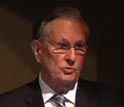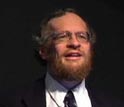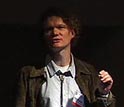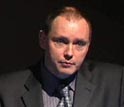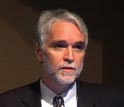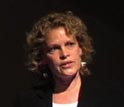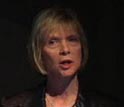News Release 09-083
Video Available: A Celebration of the International Polar Year
The event was held April 6, 2009, at the National Academy of Sciences
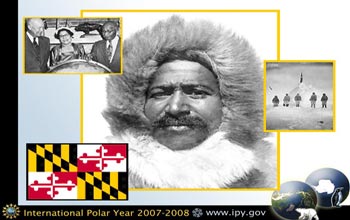
On April 6, 1909, polar explorer Matthew Henson was first person to reach the North Pole.
April 23, 2009
View videos of the IPY celebration (clip1, clip2, clip3, clip4, clip5, clip6, clip7, clip8).
This material is available primarily for archival purposes. Telephone numbers or other contact information may be out of date; please see current contact information at media contacts.
On Monday, April 6, 2009, the National Academy of Sciences (NAS) and the National Science Foundation (NSF) jointly hosted a celebration of the early research accomplishments of the International Polar Year (IPY) 2007-2008.
IPY fieldwork, a two-year deployment of scientists from more than 60 nations into the polar regions, officially concluded on March 1, 2009, but science results from IPY-funded research can be expected to be published for many months and even years to come.
The U.S. National Committee for IPY, established by the Academy's Polar Research Board, formulated the vision for U.S. participation in IPY.
The White House Office of Science and Technology Policy identified NSF as the lead federal agency for coordinating U.S. IPY activities. NSF administers the U.S. Antarctic Program and the NSF director chairs the Interagency Arctic Policy Research Committee.
The afternoon seminar at the Academy was held in conjunction with a morning event organized by the U.S. Department of State related to the Antarctic Treaty Consultative Meeting, a joint meeting of the Arctic Council and a commemoration of the 50th anniversary of the signing of the landmark Antarctic Treaty, which sets Antarctica aside as a continent for peaceful uses and for scientific research.
The IPY event was attended by officials from many of the nations involved in the Treaty meeting and the Arctic Council.
As noted by Arden L. Bement, Jr., NSF director, in his opening remarks, the IPY celebration occurred exactly 100 years to the day after U.S. explorer Matthew Henson became the first person to stand at the North Pole. Henson, a native of Maryland, was a member of the expedition led by Adm. Robert E. Peary. Henson was belatedly honored by the nation for his achievement and is buried at Arlington National Cemetery.
The agenda for the afternoon celebration included:
A welcome by James White, chair of the Polar Research Board. Opening remarks by Ralph J. Cicerone, president of the National Academy of Sciences and Bement, followed by six 20-minute talks about various aspect of IPY research.
Karl A. Erb, director of NSF's Office of Polar Programs, and David Bromwich, of Ohio State University, introduced the speakers, who included:
- Richard Alley, Pennsylvania State University
- Hajo Eicken, University of Alaska Fairbanks
- David Holland, New York University
- Timothy Killeen, NSF's assistant director for geosciences
- Stephanie Pfirman, Barnard College
- Diana Wall, Colorado State University
-NSF-
-
View Video
Welcoming and opening remarks.
Credit and Larger Version -
View Video
Richard Alley, Pennsylvania State University
Credit and Larger Version -
View Video
Hajo Eicken, University of Alaska Fairbanks
Credit and Larger Version -
View Video
David Holland, New York University
Credit and Larger Version -
View Video
Timothy Killeen, NSF's assistant director for geosciences
Credit and Larger Version -
View Video
Stephanie Pfirman, Barnard College
Credit and Larger Version -
View Video
Diana Wall, Colorado State University
Credit and Larger Version -
View Video
Audience Q & A.
Credit and Larger Version
Media Contacts
Peter West, NSF, (703) 292-7761, email: pwest@nsf.gov
Related Websites
The U.S. government's Web portal for the International Polar Year: http://www.ipy.gov
The Polar Research Board's Web site: http://dels.nas.edu/prb/
Historical information about Matthew Henson from the Arlington National Cemetery Web site: http://bit.ly/25XzZmQ
The U.S. National Science Foundation propels the nation forward by advancing fundamental research in all fields of science and engineering. NSF supports research and people by providing facilities, instruments and funding to support their ingenuity and sustain the U.S. as a global leader in research and innovation. With a fiscal year 2023 budget of $9.5 billion, NSF funds reach all 50 states through grants to nearly 2,000 colleges, universities and institutions. Each year, NSF receives more than 40,000 competitive proposals and makes about 11,000 new awards. Those awards include support for cooperative research with industry, Arctic and Antarctic research and operations, and U.S. participation in international scientific efforts.
Connect with us online
NSF website: nsf.gov
NSF News: nsf.gov/news
For News Media: nsf.gov/news/newsroom
Statistics: nsf.gov/statistics/
Awards database: nsf.gov/awardsearch/
Follow us on social
Twitter: twitter.com/NSF
Facebook: facebook.com/US.NSF
Instagram: instagram.com/nsfgov

